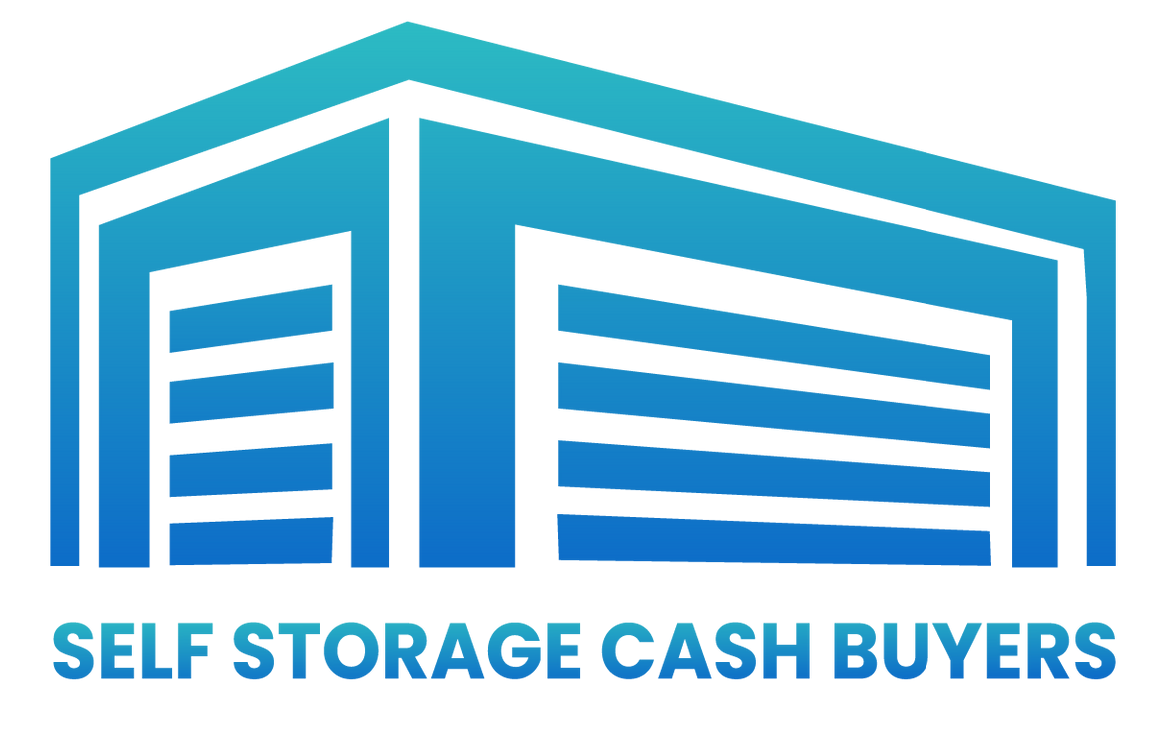Call Us Now:
Your Guide to Managing a Self-Storage Facility
Published on December 15, 2023
Free Offer Form
We will get back to you as soon as possible.
Please try again later.
Managing a self-storage facility effectively is a multifaceted endeavor that requires a blend of strategic insight, operational proficiency, and a keen understanding of the evolving dynamics within the industry.
This guide will cover the intricacies of managing a self-storage unit facility, exploring essential strategies and best practices to optimize its performance.
From customer service excellence to self-storage unit upkeep and marketing strategies to financial management, this article will give you the knowledge to thrive in this dynamic industry.
Understanding the Self-Storage Industry
This section discusses the industry's growth trajectory, key drivers, and its crucial role in meeting the evolving storage needs of individuals and companies.
Definition and History of Self-Storage
Self-storage is a growing industry that offers short-term or monthly storage solutions for various items.
Originating in the mid-20th century, it has evolved to manage and cater to more customers, including management companies and specialized storage needs.
The first self-storage business, "Public Storage," opened in 1958 in California.
Over time, self-storage units have become more refined, offering safety features, climate-controlled units, advanced access control systems, tools, and services like truck rentals and packing supplies.
Today, the industry is a resilient real estate market sector, with thousands of self-storage units nationwide serving diverse customer needs.
Growth and Trends in the Self-Storage Industry
The storage industry has experienced rapid expansion and saturation, driven by increasing demand from consumers and businesses.
The industry has seen a rise in specialized storage facilities, such as climate-controlled units for sensitive items and vehicle storage for vehicles.
Investors can now also hand the reins to management companies to protect their investments and make them profitable.
Advanced technology integration has also been embraced to make managing your storage unit facility easier.
Sustainability and eco-friendly practices have gained traction, with some storage units adopting green building practices.
One of the notable
trends in the self-storage business is the increasing demand for climate-controlled storage units.
Starting a Self-Storage Facility
Let's discuss how to manage a self-storage business, providing insights, practical steps to set up your business, and more.
Market Research and Feasibility Study
To start and manage a storage unit business, conduct a feasibility study to determine demand and investment potential.
Begin by conducting a competitor analysis and reviewing customer demographics and industry trends.
Financial projections should be created, considering factors like startup costs, operating costs, and revenue estimates.
Evaluate the potential facility's site. Consider factors like accessibility, visibility, zoning regulations, and proximity to residential and commercial areas.
Newer investors can also expand their knowledge base by consulting industry professionals or attending trade shows.
Legal and Regulatory Requirements
To start and manage a self-storage facility business, a self-storage owner must comply with laws and duties specific to his location.
- Zoning and Land Use Restrictions: Check with your local zoning department to determine whether the chosen location is zoned for storage units.
- Permits and Authorizations: Every self-storage owner will need specific permits and licenses to manage a storage space. This typically includes self-storage business licenses, building permits, and possibly environmental permits.
- Construction Codes and Regulations: Ensure that the design and construction of your small business complies with local building codes and regulations. This includes safety standards, fire codes, accessibility requirements, and structural engineering.
- Environmental Compliance: Be aware of any environmental regulations that may apply to your small business
.
- Security and Access Control: Implement safety measures like security cameras and motion-activated lights to manage and protect the safety and privacy of your customers' belongings. This may include surveillance systems, access control measures, and adequate lighting.
Financing and Budgeting
Starting and managing a facility and business requires a comprehensive business plan, including identifying your target market, location, competition analysis, and marketing efforts.
Financing options include personal savings, bank loans, SBA loans, private investors, Real Estate Investment Trusts (REITs), and crowdfunding.
To manage and secure financing, consider personal savings, bank loans, SBA loans, private investors, REITs, and crowdfunding platforms.
Budget for unforeseen expenses, operating costs, marketing and advertising, safety and maintenance measures, working capital, and financial projections.
Managing a Self-Storage Facility
This section will explore the key principles and strategies for managing a successful self-storage business.
Facility Design and Layout
Location and accessibility are crucial for a facility business, with well-maintained driveways, ample parking, and clear signage being essential. As the owner, you'll also need to consider your storage unit selection.
The storage unit mix should include small lockers and medium-sized units with climate control.
Security measures should include perimeter security, surveillance systems, access control, lighting, a good traffic flow, a sensibly designed office and amenities, and regular maintenance.
Security and Safety Measures
Effective security and safety management is crucial in self-service businesses. This will help your business retain customers and keep their items safe.
Electronic gate access, keypad entry, and smartphone apps are essential for restricting access to specific customers and staff. Surveillance cameras, alarms, and motion sensors are also essential for security.
Installing motion-activated lights and secure fencing around the property can deter trespassers. Automated software can also be used to secure the facility.
Customers may also need training from staff on unit access verification, emergency procedures, fire suppression systems, and fire lanes.
Some facilities also install self-service kiosks to automate the rental process and address the needs of their customers. These kiosks can also be used to receive customer feedback.
Customer Service and Communication
Facilities should be committed to quality customer service and effective communication to manage a successful storage business.
This includes hiring and training staff with excellent customer service skills, maintaining clear policies and procedures, and providing written documentation.
Effective communication means responding promptly and opening multiple communication channels.
Customers should be oriented through onboarding, information packets, online services, and a customer portal.
Facilities should also incorporate surveys to get more customer feedback, and resolve complaints quickly.
Maintenance and Repairs
A self-storage property requires regular maintenance and repairs to ensure customers' safety, protect the customers' belongings, and maintain the property's value.
This includes creating a maintenance schedule, installing state-of-the-art security systems, landscaping, and pest control.
Building maintenance should also include inspecting and maintaining roofs, doors, locks, and paint.
Common areas should be cleaned and maintained, and lighting should be adequate.
Marketing and Promotion
Effective marketing and promotion are crucial for managing a facility business.
Consider attracting new customers by offering exclusive online discounts or running promotional campaigns to fill vacant storage units. The strategies for promoting your facility can involve the following.
- Research
- Online presence
- SEO
- Content marketing
- Reviews
- Reputation management
- Traditional Marketing
- Referral programs
- Special offers
- Analytics
- Customer engagement
- Brand consistency
Research involves understanding the target audience, local competition, and demand for self-storage units. Competitive analysis identifies opportunities for differentiation.
Data from self-storage management software can help companies focus their marketing efforts and minimize marketing costs.
Hiring and Training Staff

This segment explores the strategies for successful recruitment, onboarding, and ongoing personnel training in self-storage management.
Roles and Responsibilities of a Self-Storage Manager
A facility manager is essential for a facility's smooth operation and success, encompassing customer service, self-storage property maintenance, security, and administrative duties.
Key responsibilities include establishing positive relationships with customers, assisting with onboarding, and maintaining cleanliness and security.
They also oversee unit upkeep, repairs, and regular inspections.
Security protocols are implemented and enforced, and emergency procedures are provided. Managers also have administrative duties like rent collection, rent management, record keeping, and reporting.
Hiring and Training Best Practices
Here's what to know when hiring and training employees.
Some best practices include customer service training, security awareness screening, interviews, background checks, and cultural fit assessment.
Training should cover things like hands-on customer interaction and security. It should also be regularly updated in light of the newest best practices.
These practices help build a skilled and motivated workforce.
Investing in your employees' development will pay dividends in terms of customer satisfaction and operational efficiency.
Maximizing Profitability
In the self-storage sector, exploring business profitability often involves analyzing pricing strategies, cost control measures, and tenant retention initiatives to maximize revenue and minimize expenses.
Let's discuss how to maximize profitability and start optimizing your self-storage investment in this quickly-growing industry.
The following sections are written for all facility owners, whether they're solo or part of a management company.
Revenue Generation Strategies
To maximize profitability in a facility company, it's essential to implement effective revenue generation strategies and tools.
A self-storage management company should employ dynamic pricing and data analytics, like reviewing the most popular storage unit sizes and tenant turnover.
Facility owners can also use renewal incentives to retain customers.
These strategies aim to increase the facility's income while improving customer satisfaction.
Dynamic pricing adjusts rent rates based on demand, occupancy, and seasons, while rate increases are considered modest for existing tenants.
Cost Control and Expense Management
Maximizing profitability in a self-storage facility involves increasing revenue and managing costs and expenses effectively. The strategies include measures like the following.
- Budget development
- Expense analysis
- Optimizing the number of employees
- Marketing efficiency
- Technology investments
- Inventory management
- Insurance review
- Tax planning
- Tenant retention
- Streamlining operations
Budget development involves creating a comprehensive budget that outlines expected revenue, expenses, and profit margins. Regular expense analysis helps identify cost drivers and optimizes costs.
Pricing and Rate Optimization
Pricing and rate optimization are essential for self-storage facilities to maximize profitability. The process involves the following.
- Research
- Demand analysis
- Pricing
- Storage unit differentiation
- Lease incentives
- Online booking
- Tenant segmentation
- Revenue management software
- Promotions
- Tenant communication
These strategies help generate more revenue while maintaining high occupancy rates and tenant satisfaction.
By implementing effective strategies, self-storage facilities can achieve profitability by balancing revenue with customer storage needs and budget constraints.
Technology and Innovation in Self-Storage
Facility managers and owners are constantly exploring optimal management software to streamline their operations and efficiently oversee their storage facilities.
This section will cover new technology and self-storage innovations.
Automation and Digital Solutions
The industry is undergoing significant technological advancements, transforming operations, security, and tenant experiences. There's also self-storage management software to make facility management easier.
Automated access control technology allows tenants to enter storage units securely using individual access codes or proximity cards, while remote access allows tenants and owners to remotely manage the unit.
An automated facility will allow managers or business owners to work remotely, instead of being on-site at all times. Tenants can also rent units through handy software.
Online booking platforms and contactless rentals streamline the process of renting units, while digital payments and billing allow tenants to pay online.
The benefits of self-storage automation include improved operational efficiency, reduced staffing needs, and enhanced convenience for tenants.
Online Booking and Payment Systems
Online booking and payment systems are revolutionizing the industry by streamlining rental processes and improving efficiency.
These systems offer digital reservations, real-time updates, storage unit selection, contactless rentals, electronic signatures, automated communication, and user-friendly interfaces.
They can also be integrated with property management software to make operations easier and give customers more options to pay their rent.
Investing in property management software enables efficient management of customer accounts, payments, invoices, reminders, and online bookings.
Online booking and payment systems allow tenants to rent self-storage units and make payments at their convenience, 24/7. An improved customer experience can lead to greater retention.
Data Analytics and Business Intelligence
Data analytics and business intelligence enable facility owners and property managers to make decisions, enhance operations, and maximize profitability.
Self-storage management software can be leveraged to provide valuable data on your facility's operations.
These tools include tenant data, operational data, competitor data, and online and marketing data. All this data can improve the following.
- Occupancy optimization
- Pricing optimization
- Customer segmentation
- Tenant retention strategies
- Operational efficiency
- Safety monitoring
- Marketing performance
- Customer experience enhancement
The benefits of data analytics include informed decision-making, a competitive advantage, cost reduction, tenant satisfaction, adaptation, risk mitigation, and revenue growth.
With data analytics, storage businesses can stay ahead of trends, optimize pricing, and enhance the tenant experience.

Legal and Insurance Considerations
This section discusses legal and insurance matters that storage facility owners need to be aware of.
Legal Compliance and Documentation
Legal compliance and documentation are crucial for managing a unit.
It involves adhering to local, state, and federal regulations, like zoning laws, building codes, accessibility requirements, and environmental regulations.
Lease agreements should be written in clear language to avoid disputes. Tenant rights and responsibilities should be clearly defined, and lien laws should be understood and adhered to.
Liability insurance should be maintained to protect against claims related to property damage.
Insurance Coverage and Risk Management
Insurance coverage and risk management can protect a business from financial loss and potential liabilities.
Sufficient risk management strategies can help mitigate potential liabilities and reduce insurance costs for self-storage facility owners.
Key considerations include general liability insurance, property insurance, tenant insurance, business interruption insurance, and cyber insurance.
Risk management strategies include robust safety measures, safety protocols, emergency preparedness, regular inspections, tenant screening, clear lease terms, and liability waivers.
It's also a good idea to educate your potential customers and tenants.
Tenants should be educated about the benefits of tenant insurance and the importance of protecting their stored belongings.
Industry Best Practices and Success Stories
This segment offers real-world success stories from the self-storage industry.
Case Studies of Successful Self-Storage Facilities
Nick, a long-time investor in single-family rentals and mobile homes, shifted his focus to storage in 2020. His facility, Zanesville Best Storage, has grown significantly despite off-peak seasons.
Nick emphasized operational capabilities, technology, and scalability and chose a remote third-party self-storage facility management software for convenience.
He diversified his unit with different sizing options, helping him cater to diverse storage needs.
He implemented remote management software to save money and hired Copper Storage Management (CSM) software for bookkeeping, marketing efforts, and call center services.
The facility currently sees a 4% monthly growth rate and is expected to continue growing during busy seasons.
The self-storage facility in Placerville, CA, was acquired by Crescendo Properties in March 2016. The property was analyzed for revenue growth opportunities and improved accordingly.
The property's online local listings were improved, and the tenant property protection program was implemented, increasing occupancy from 84% to 93%.
The property's late fee structure was adjusted, increasing annual late fees from $14,648 to $26,287.
The administrative fee was increased to $30.00, resulting in an additional $3,312.64 per year without harming occupancy.
The property's ownership refinanced and pulled out 71% of their initial equity, resulting in a cash-on-cash return of 34% per year.
Lessons Learned and Key Takeaways
Successful facilities are located in high-traffic areas, near residential neighborhoods, or close to businesses, and invest in marketing efforts that resonate with their target audience.
They offer a variety of self-storage unit sizes and types, prioritize exceptional customer service, invest in modern safety measures, streamline rental processes, and develop tenant retention programs.
Regular maintenance and upkeep also keep existing renters and reduce operational costs associated with repairs and refurbishments.
Data-driven decision-making and community engagement can help optimize revenue and operations.
By applying these lessons and takeaways, a facility manager
can achieve similar success levels.
Frequently Asked Questions
Find out more about managing self-storage facilities here.
What Is the Average Cost of Starting a Self-Storage Facility?
The average cost considerations to build a self-storage facility can range from $1 million to $5 million, depending on location, size, land acquisition costs, construction expenses, and amenities offered.
Expect to pay more for better locations, like those closer to the city center.
How Can I Attract Customers to My Self-Storage Facility?
To keep existing renters and attract new customers to your self-storage unit, try these tips.
- Invest in effective marketing strategies
- Create a user-friendly website
- Offer competitive pricing
- Highlight safety features
- Provide excellent customer service
- Collaborate with local businesses
- Engage with the community
- List your facility on online directories
- Use Google Ads for pay-per-click advertising
These strategies will help build trust, attract potential customers, and increase your facility's visibility.
What Are the Most Common Challenges Faced by Self-Storage Managers?
The most common challenges self-storage managers face include tenant delinquency, unit protection, competition, maintenance, and regulatory compliance.
How Can I Ensure the Safety and Security of My Self-Storage Facility?
To enhance your storage unit's security, implement the following measures.
- Install robust safety systems
- Implement proper lighting
- Conduct regular audits
- Enforce strict access procedures
- Educate tenants
- Collaborate with law enforcement
- Invest in secure locks
- Reinforce fencing
- Develop emergency response plans
What Are the Key Factors to Consider When Hiring Staff for a Self-Storage Facility?
When hiring employees for a self-storage facility, consider these factors.
- Customer service skills
- Safety awareness
- Technical proficiency
- Maintenance skills
- Tenant relations
- Background checks
- Dependability
These factors help build capable and customer-focused employees.
Conclusion
From legal compliance and customer service excellence to cutting-edge technology and marketing prowess, each component contributes to your facility's prosperity.
With the self-storage industry showing continued growth and evolution, embracing these approaches can help your self-storage facility thrive.
We encourage you to take action, leverage these insights, and embark on a journey to realize your self-storage facility's full potential.
Free Offer Form
We will get back to you as soon as possible.
Please try again later.
Have A Storage Facility You Want To Sell?
we buy storage facilities in these states
List of Services
-
California
-
Texas
-
Florida
-
New York
-
Pennsylvania
-
Illinois
-
Ohio
-
Georgia
-
North Carolina
-
Michigan
-
New Jersey
-
Virginia
-
Washington
-
Arizona
-
Tennessee
-
Massachusetts
-
Indiana
-
Missouri
-
Maryland
-
Wisconsin
-
Colorado
-
Minnesota
-
South Carolina
-
Alabama
-
Kentucky
-
Louisiana
-
Oregon
-
Oklahoma
-
Connecticut
-
Utah
-
Nevada
-
Iowa
-
Arkansas
-
Kansas
-
Mississippi
-
New Mexico
-
Idaho
-
Nebraska
-
West Virginia
-
Hawaii
-
New Hampshire
-
Maine
-
Montana
-
Rhode Island
-
Delaware
-
South Dakota
-
North Dakota
-
Alaska
-
Vermont
-
Wyoming


